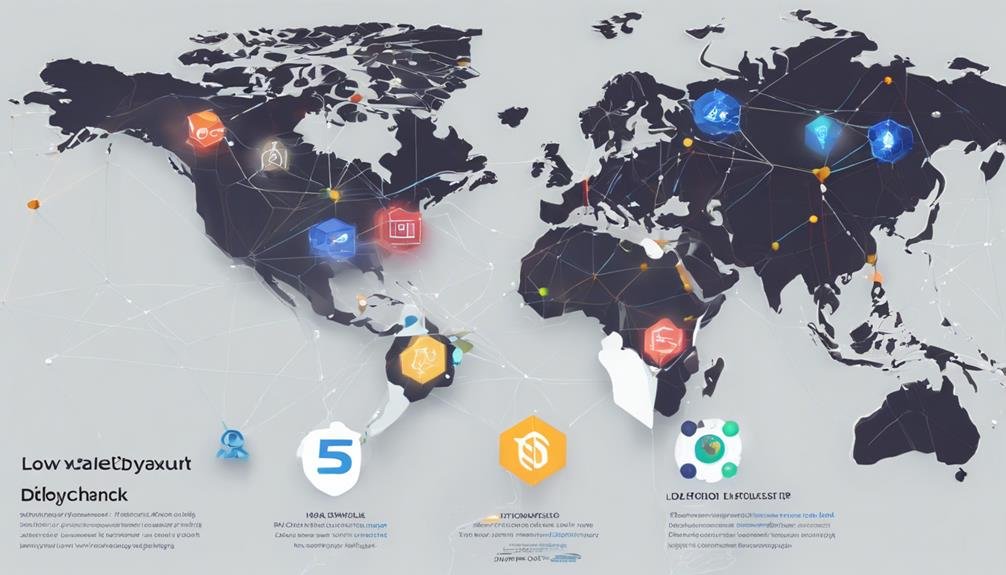Proof of Stake (PoS), Delegated Proof of Stake (DPoS), Transaction as Proof of Stake (TaPoS), Delegated Byzantine Fault Tolerance (dBFT), and Casper are top low latency blockchain consensus protocols. PoS validates based on validator stakes, which Ethereum and others use to reduce mining’s environmental impact. DPoS sees validators maintain transactions through voting, offering rapid verification, while TaPoS enhances security by including block header hash in transactions. dBFT prioritizes speed and security by trusted node voting, and Casper manages validator behavior to thwart attacks. Each protocol serves its role in ensuring efficient and secure blockchain validation.
Table of Contents
Brief Overview of Top 5 Low Latency Consensus Protocols Blockchain
- Delegated Proof of Stake (DPoS) ensures rapid transaction verification through a voting system.
- Transaction as Proof of Stake (TaPoS) enhances security by mandating block header hash inclusion.
- Delegated Byzantine Fault Tolerance (dBFT) offers fast block generation and network security.
- Casper manages validator behavior to prevent double-spending attacks and enhance transaction validity.
- Proof of Stake (PoS) reduces environmental impact while validating blocks based on stake.
Proof of Stake (PoS)
Proof of Stake (PoS) is a consensus protocol that validates blocks based on the stake of validators, selected randomly according to their stake amount. This energy-efficient alternative to Proof of Work (PoW) is adopted by cryptocurrencies like Ethereum, Steem, Tezos, and Gridcoin for their consensus mechanisms. PoS reduces the environmental impact of mining operations by eliminating the need for special computers.
However, PoS is not without its challenges. The protocol is vulnerable to transaction reversals, bribery, and the risk of centralization in blockchain networks. Validators with larger stakes have more influence, potentially leading to a concentration of power in the hands of a few participants. Despite these risks, PoS offers a more sustainable and scalable approach to blockchain validation, making it an attractive option for projects aiming to improve energy efficiency and transaction processing speed.
Delegated Proof of Stake (DPoS)

Utilizing a delegated system, validators in the Delegated Proof of Stake (DPoS) protocol are entrusted with maintaining and validating transactions in exchange for transaction fees. DPoS functions through a voting system where participants select delegates to achieve efficient block consensus. This consensus protocol is essential for applications requiring rapid transaction verification and transparency.
Users within a DPoS system have the power to eliminate malicious delegates using the transparent voting mechanism, enhancing the network’s security. However, DPoS does have drawbacks, as it can exhibit partial centralization and is vulnerable to specific types of attacks, leading to centralization risks within the network. Despite these risks, DPoS remains popular due to its ability to process transactions quickly and maintain a transparent environment through the voting system. It is vital for DPoS networks to continuously monitor and address centralization risks to uphold the protocol’s integrity and security.
Transaction as Proof of Stake (TaPoS)

Transaction as Proof of Stake (TaPoS) introduces a vital security measure against malicious activities within blockchain networks by mandating the inclusion of the hash of the most recent block header in every transaction. This protocol plays a vital role in enhancing security measures within permissioned blockchain networks by preventing transaction replay attacks and maintaining the integrity of the blockchain network. TaPoS guarantees successful mining and reduces potential vulnerabilities that could compromise the network’s security by requiring the hash of the most recent block header in each transaction.
Despite its effectiveness in bolstering security, adopting the TaPoS consensus protocol needs to be improved due to limited support and awareness. While fewer developers may be actively working on advancing TaPoS, its unique approach to transaction validation significantly contributes to creating a more secure environment for blockchain transactions. Overall, TaPoS stands as a promising security measure that addresses critical security concerns within blockchain networks, emphasizing the importance of transaction integrity and validation.
Delegated Byzantine Fault Tolerance (dBFT)

Delegated Byzantine Fault Tolerance (dBFT) emerges as a robust consensus protocol for ensuring efficient transaction finality in blockchain networks by enhancing block generation speed and network security. dBFT operates on a delegated voting system among trusted nodes, allowing for high-speed block generation and low latency. In this protocol, nodes propose and validate blocks in a deterministic order, significantly reducing the risk of forking and ensuring a smooth consensus process.
One of the critical strengths of dBFT is its ability to finalize transactions quickly, making it ideal for applications that require near-instant transaction confirmations. Additionally, dBFT prioritizes network security by selecting reputable nodes as delegates, thereby minimizing the potential for Byzantine faults and ensuring overall network stability. This combination of high-speed block generation, low latency, efficient transaction finality, and network security makes Delegated Byzantine Fault Tolerance a compelling choice for blockchain consensus protocols.
Casper

Casper, a Proof of Stake (PoS) consensus protocol, has been meticulously crafted to identify and mitigate malicious validators within blockchain networks swiftly.
- Casper focuses on managing validator behavior to reduce the risk of double-spending attacks, ensuring the integrity of the blockchain network.
- Despite its advancements, Casper remains vulnerable to a 51% attack if most validators act maliciously, jeopardizing blockchain security.
- One of the standout features of Casper is its efficient block finalization process, which enhances transaction validity and consensus, boosting overall network security.
Frequently Asked Questions
What Is the Best Consensus Protocol?
Factors such as consensus efficiency, network scalability, security tradeoffs, performance benchmarks, fault tolerance, decentralized governance, economic incentives, validator selection, Byzantine fault, and leader election play important roles in evaluating the best consensus protocol for a blockchain network.
Which Blockchain Protocol Is Best?
The balance between speed and security is paramount in evaluating blockchain protocols. Critical factors include scalability challenges, network performance, decentralization tradeoffs, and Byzantine fault tolerance. Efficient consensus algorithms, Sybil resistance, interoperability, and governance models further impact blockchain success.
What Are the Three Main Blockchain Protocols?
The three main blockchain protocols are Proof of Work (PoW), Proof of Stake (PoS), and Delegated Proof of Stake (DPoS). These consensus mechanisms guarantee secure transaction validation, network integrity, and efficient block creation.
What are the most common consensus mechanisms in blockchain?
The most common consensus mechanisms in blockchain networks include Proof of Work (PoW), Proof of Stake (PoS), Delegated Proof of Stake (DPoS), Proof of Authority, and Practical Byzantine Fault Tolerance to guarantee secure and efficient transactions.
Conclusion
Ultimately, blockchain consensus protocols play a vital role in ensuring the security and efficiency of decentralized networks. Each protocol offers unique features and benefits, such as scalability and low latency. By utilizing these protocols, blockchain networks can achieve consensus in a reliable and secure manner, enhancing the system’s overall performance. Just as a well-oiled machine relies on precise mechanisms to function smoothly, blockchain protocols are the backbone of decentralized ecosystems, facilitating seamless transactions and data integrity.




